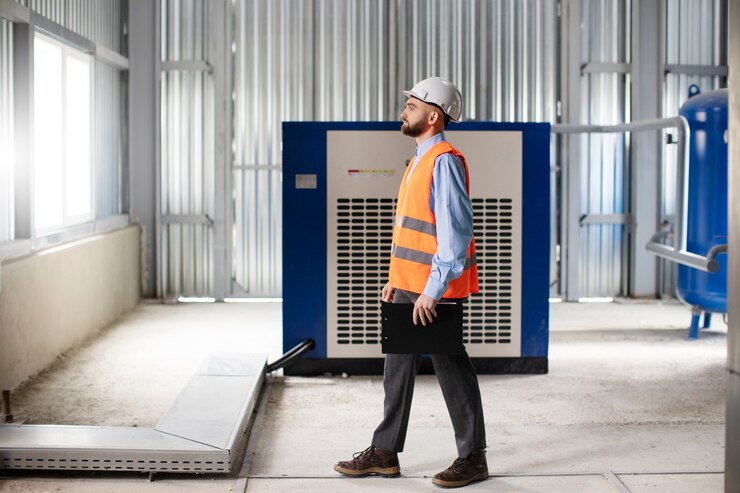Few systems play as pivotal a role in home comfort and functionality as plumbing and air conditioning. Plumbing ensures the efficient distribution of water throughout a home, while air conditioning regulates indoor temperature, providing relief from scorching summers and chilling winters. So, if you are in search of these services, then you can count on the team at Oh No Plumbing & Air Conditioning to handle your project. Although distinct, these systems often intersect, both in terms of installation and maintenance. Here, we will delve into the intricate interplay between plumbing and air conditioning, exploring their individual functions, common challenges, and the importance of professional maintenance in ensuring optimal performance.
The intricate interplay between plumbing and air conditioning
- Plumbing: The Lifeline of Hygiene and Convenience
Plumbing, often referred to as a building’s circulatory system, encompasses a network of pipes, fixtures, and appliances designed to facilitate the distribution of water for various purposes. From supplying fresh water for drinking, bathing, and cooking to eliminating wastewater, plumbing is indispensable for maintaining hygiene and convenience in modern households. The functionality of plumbing systems relies on proper installation, regular maintenance, and prompt repair of any leaks or blockages.
- Components of a Plumbing System
A typical plumbing system comprises several key components, including supply pipes, drainage pipes, fixtures such as sinks and toilets, water heaters, and sewage systems. Supply pipes transport clean water from the main water line to different fixtures and appliances, while drainage pipes carry wastewater away from the house to municipal sewage systems or septic tanks. Fixtures like faucets, showers, and toilets facilitate the use of water for various purposes, while water heaters ensure a steady supply of hot water for bathing and household chores.
- Challenges in Plumbing Systems
Despite their crucial role, plumbing systems are susceptible to various challenges that can compromise their functionality and integrity. Common issues include leaks, clogs, corrosion, and pipe damage due to freezing or water pressure. If left unchecked, leaks not only waste water but also contribute to water damage and mold growth. Clogs in drainage pipes can lead to backups and unpleasant odors, while corrosion weakens pipes over time, increasing the risk of bursts or leaks.
- Importance of Professional Plumbing Services
To address these challenges effectively and maintain the optimal performance of plumbing systems, homeowners often rely on professional plumbing services. Licensed plumbers possess the expertise and equipment to diagnose issues accurately, perform repairs or replacements as needed, and ensure compliance with building codes and regulations. Regular inspections and preventative maintenance help identify potential problems early on, saving homeowners from costly repairs and minimizing disruptions to their daily routines.
- Air Conditioning: Navigating Climate Control
Air conditioning, synonymous with comfort during sweltering summers, plays a pivotal role in regulating indoor temperature and humidity levels. By extracting heat from indoor air and transferring it outside, air conditioning systems create a cool and comfortable environment conducive to productivity and relaxation. Whether installed as central air conditioning units or ductless mini-split systems, these appliances require proper installation, maintenance, and repair to function efficiently and prolong their lifespan.
- Functionality of Air Conditioning Systems
Air conditioning systems operate on the principle of refrigeration, using a closed-loop cycle of compression, condensation, expansion, and evaporation to remove heat from indoor air. A compressor pressurizes refrigerant gas, causing it to release heat as it condenses into a liquid. The liquid refrigerant then passes through an expansion valve, where it evaporates into a gas, absorbing heat from indoor air in the process. Finally, the refrigerant returns to the compressor to repeat the cycle.
- Common Challenges in Air Conditioning
Despite their ability to provide respite from heat, air conditioning systems are prone to various challenges that can compromise their performance and efficiency. Common issues include refrigerant leaks, compressor failures, clogged filters, electrical malfunctions, and inadequate airflow. Refrigerant leaks not only diminish cooling capacity but also pose environmental hazards, while compressor failures can necessitate costly repairs or replacements. Clogged filters restrict airflow, reducing system efficiency and indoor air quality.
- The Intersection of Plumbing and Air Conditioning
While plumbing and air conditioning systems serve distinct purposes, they often intersect during installation and maintenance processes. For instance, air conditioning units may require access to plumbing lines for condensate drainage, especially in central HVAC systems. Additionally, proper insulation and sealing around plumbing fixtures and pipes help maintain indoor temperature and humidity levels, enhancing the efficiency of air conditioning systems. Regular maintenance of both systems ensures their seamless coexistence and optimal performance.
- Professional Maintenance: A Key to Longevity
Both plumbing and air conditioning systems benefit from regular maintenance performed by qualified professionals. Scheduled inspections allow plumbers and HVAC technicians to identify potential issues early on, preventing costly repairs and extending the lifespan of equipment. Tasks such as cleaning drains, replacing worn components, checking refrigerant levels, and lubricating moving parts are essential for maintaining peak performance and energy efficiency. Homeowners can also benefit from routine maintenance contracts offered by reputable service providers.
In the modern quest for comfort and convenience, plumbing and air conditioning emerge as indispensable systems that enhance our quality of life. Plumbing ensures the efficient distribution of water for various purposes, while air conditioning regulates indoor temperature, providing relief from extreme weather conditions. Despite their distinct functions, these systems often intersect, requiring careful coordination during installation and maintenance. By understanding their individual components, common challenges, and the importance of professional maintenance, homeowners can ensure the seamless operation of plumbing and air conditioning systems, ensuring comfort and functionality for years to come.







